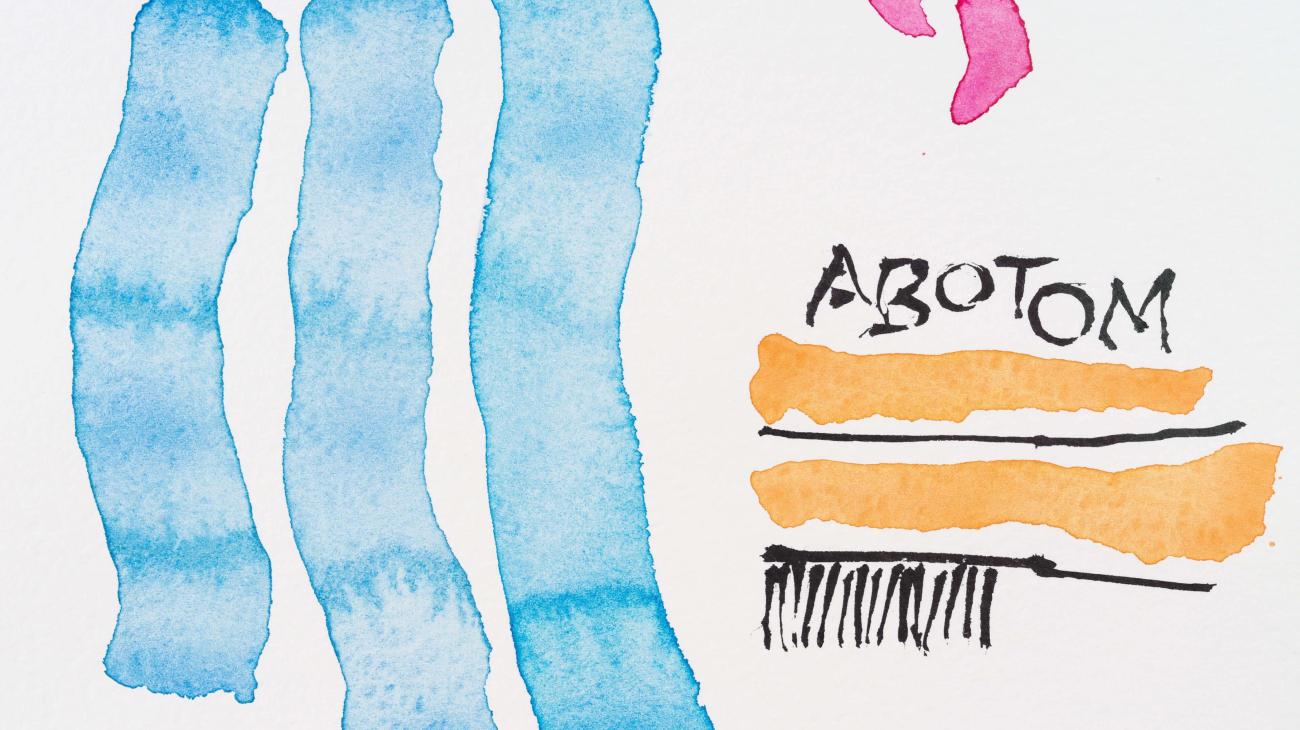
Giorgio Griffa, Abotom, 2018, watercolor and India ink on paper (detail)—photo by Federico Rizzo

Giorgio Griffa, Abotom, 2018, watercolor and India ink on paper (detail)—photo by Federico Rizzo
Watercolours, inks, pencils, and charcoals trace out hidden worlds and open shamanic glimpses into the unknown in this intimate exhibition of works on paper by Giorgio Griffa, spanning fifty years of his practice, from 1975 to 2025. Marks and colours—as Giacomo Doglio, Mayor of Rittana, writes—invite contemplation of a creativity imbued with poetry. Curated by the Fondazione Giorgio Griffa, the exhibition is part of a compelling programme of initiatives promoted by the Municipality of Rittana and its Mudri (the Rittana eco-museum), dedicated to contemporary arts.
A bilingual catalogue (Italian and English) published by Primalpe accompanies the exhibition, featuring a curatorial text and faithful photographic reproductions of the works, along with close-up details that highlight the quality and distinctive features of the watercolours and drawings.
Giorgio Griffa’s works on paper have always accompanied his paintings on canvas, ever since the early Primary Signs cycle, as a parallel and independent stream. Perhaps less well-known by the general public, it is a stream that possesses equal dignity, with no hierarchy of media or formats. Never a sketch or a draft, each sheet is a work in itself, a stepping stone along a path that is perhaps more intimate but no less vital, nourishing the hand and giving voice to the history and memory of line and colour, which have accompanied humankind since time immemorial, in a millennia-old process of coming to know the world ever more deeply.
Giorgio’s paper works have a subtle presence, seemingly entering into a quiet, contemplative dialogue with the almost monastic stillness of Rittana’s former parish house, now converted into a venue for contemporary art. The encounter between the space and the works invites contemplation, silence, and a sense of the sacred. Paper seems to summon up this dimension perhaps even more than canvas, its fragility heightened by the ethereal delicacy of watercolour, its porous lightness able to absorb and release the gestures of the human hand—gestures that from the very beginning have always committed to paper pictures, symbols, metaphors, words, chants, and invocations. In Griffa’s practice, paper is a “sacred space,” a site for the ritual of painting—Abotom, to use a shaman’s word; an intelligent material unburdened by the duty of depiction, free from the constraints of any prescribed narrative, so as to embrace all the narratives of humankind and the world.
Giulio Caresio